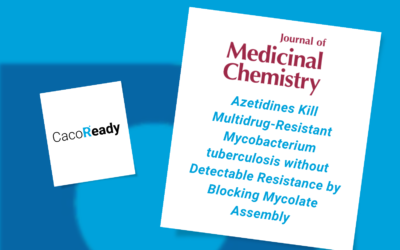A new study led by the company Chiesi Farmaceutici has been published last July in the Pharmaceutics Journal and has relied on CacoReady Kits as part of its permeability research.
The publication, entitled Daily Intraperitoneal Administration of RGZ Does Not Improve Lung Function or Alveolarization in Preterm Rabbits Exposed to Hyperoxia, was aimed at testing the efficacy of three types of Thiazolidenoides (TZN) in preterm rabbits with bronchopulmonary dysplasia.
About the study
Bronchopulmonary dysplasia (BPD) is a condition that affects 35% of infants born within less than 28 weeks of gestational age and is the main comorbidity of preterm birth. It is caused by the fact that extremely premature infants often require positive pressure ventilation and supplemental oxygen in the first days of life, which can cause unwanted damage to their immature lungs. Over the past few years there have been advances in neonatal care, such as prenatal steroids, noninvasive ventilation techniques, and well-targeted supplemental oxygen levels. However, BPD remains the main comorbidity associated with preterm birth.
Previous research had shown that TZDs have the ability to attenuate alveolar simplification in postnatal rodent hyperoxia. The reason is that these drugs are peroxisome proliferator-activated receptor γ (PPARγ) agonists, involved in lung development and injury/repair processes. For this reason, the team led by G. Aquila wanted to focus on the evaluation of three types of TZD: RGZ, pioglitazone, and DRF-2546, to test whether it was also effective in preterm rabbits.
In this study, for the TZDs in vitro assays, the team investigated:
- PPAR selectivity
- Epithelial permeability
- Lung tissue binding
The role of our ready-to-use kits in the permeability assay
The CacoReady cells arrived already seeded and differentiated in 96-well plates. Control compounds used in the study were sulpiride (low permeability control), metoprolol (high permeability control), talinolol (P-glycoprotein transport (P-gp) substrate control), and GF120918 (P-gp inhibitor).
During the experiment, cell monolayers’ integrity was assessed before and after the assay by measuring the transepithelial electrical resistance (TEER). Besides, the permeability of the compounds across the cell monolayer was determined by measuring their transport from apical to basolateral and basolateral to apical in the absence and presence of a P-gp inhibitor.
After samples were collected, the results indicated a high permeability of RGZ through biological membranes. The assay also showed high bidirectional Papp values for all TZDs and independence of P-gp-mediated transport with no involvement of efflux transporters.
Experimental results
The study proved that the three TZDs investigated here, RGZ, PGZ, and DRF-2546, have high epithelial permeability and plasma and lung tissue binding in vitro, although RGZ shows the highest affinity for PPAR.
Also, the pharmacokinetic profiling of RZG in preterm rabbits revealed an equivalent biodistribution after either intratracheal or intraperitoneal administration. However, daily intraperitoneal RGZ doses of 1 mg/kg did not improve lung function in preterm rabbits exposed to prolonged hyperoxia. Moreover, increasing the RGZ dose to 10 mg/kg caused a significant worsening in lung function.
Read full article: Daily Intraperitoneal Administration of RGZ Does Not Improve Lung Function or Alveolarization in Preterm Rabbits Exposed to Hyperoxia





